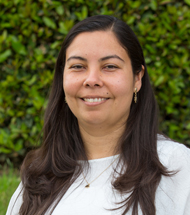Mathematical Model Could Predict Heart Arrhythmias
In her doctoral thesis, researcher Claudia Hawks has developed a theoretical model whose application could help predict heart failure.

Claudia Hawks, PhD from the University of Navarra, has studied in her doctoral thesis the problems of electrical conduction in the heart. Specifically, the research consisted of the study of electrical propagation in cardiac tissue whose myocytes showed damage to the communication channels between them.
The substantial contribution of this research is that ifelectrical conduction failures occur in the heart "there is a limit that the tissue can withstand before it fails" and "could be used to predict arrhythmias if the causes that produce them under certain conditions are known," Hawks notes.
The researcher's work is based on asimulation solved by means of mathematical equations, i.e., she has not used animal cardiac tissue but has developed a computational tissue to perform the appropriate measurements. "What we do is take data from real experiments and, following the operating equations, repeat the experiment by simulating it on the computer.
This study has made it possible to observe when myocytes are not well communicated and electricity does not propagate properly through them. "We were able to report a variation in channel opening that causes these channels to alternate between allowing electricity to pass or almost preventing it from passing from one myocyte to another. This effect results in tissue damage that leads to cardiac failure," says Hawks.
Claudia Hawks points out that the breakthrough in this line of research must be experimental proof to be able to understand why this phenomenon occurs and the real damage it produces in cardiac tissue. "The variations of the conductance in the channels that connect the myocytes must be considered in the current software of the instrumentation used by physicians. In this way, they will be able to detect cases in which these failures occur."
Hawks insists on the good relationship that should exist between mathematics and the study of the human body and the positive and direct contribution of this scientific discipline to people's health, through technological developments applied to treatments. "New technologies are being developed with continuous improvements to achieve better performance and to be more accessible, as well as personalized, to any patient".